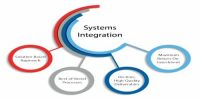Strategic control is a term used to describe the process used by organizations to control the formation and execution of strategic plans; it is a specialized form of management control, and differs from other forms of management control (in particular from operational control) in respects of its need to handle uncertainty and ambiguity at various points in the control process.
The tools and techniques of strategic control can be classified into the following two major groups:
(A) Strategic momentum control; and (B) Strategic leap control.
(A) Strategic momentum control: These techniques are aimed at assuring that the assumptions on whose basis strategies were formulated are still valid, and finding out what needs to be done in order to allow the organization to maintain its existing strategic momentum. It includes the following techniques:
- Responsibility control centers: In this technique, strategies are evaluated and controlled on the basis of revenue, expense, profit, and investment centers.
- The underlying success factors: On the basis of Key Success Factors (KSFs) of an organization, the strategists can continually evaluate and control the strategy.
- The generic strategic approach: This approach is based on the assumption that the strategies adopted by a firm similar to another firm are comparable.
(B) Strategic leap control: This control call assist organizations by helping to define the new strategic requirements and cope with emerging environmental realities. It includes the following techniques:
- Strategic issue management: This technique is aimed at identifying one or more strategic issues and assessing their impact on the organization.
- Strategic field analysis: It is a way of examining the nature and extent of synergies that exist or are lacking between the components of an organization.
- System modeling: It is based on computer-based models that stimulate the essential features of the organization and its environment.
- Scenarios: Scenarios are perceptions about the likely environment a firm would face in the future.
So, these are the various tools and techniques used in strategic evaluation and control.














